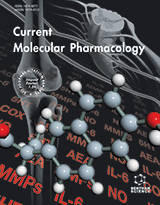Abstract
The universal prevalence of hepatitis C virus (HCV) infection, which causes chronic hepatitis, cirrhosis, liver failure, and hepatocellular carcinoma, has become a significant health problem worldwide. Interferon-based therapies, the current standard, IFN-based therapies have limited efficacy and undesirable adverse effects. In addition, neither vaccination against HCV nor specific antiviral reagents for HCV are yet available. Thus, a major medical need still exists for novel and more efficacious anti-HCV reagents showing broad-spectrum clinical efficacy with enhanced tolerability. With the progress in our current understanding of the function and regulation of HCV gene products, the three-dimensional structures of virally encoded enzymes and the recent establishment of the HCV-replicon system, several pharmacological targets are being studied for HCV therapy, including cellular receptors mediating HCV entry, factors facilitating HCV replication and assembly, and intracellular pathways. Recently developed mouse models will be very helpful in evaluating the in vivo efficacy of novel antiviral reagents. Currently many novel antiviral drugs are under evaluation in clinical trials. This review will comprehensively discuss the current treatment options and various novel antiviral reagents available. Ongoing clinical studies of promising lead drugs are also reviewed.
Keywords: Hepatitis C virus, therapy, target, inhibitor, effectiveness, safety, resistance, clinical studies
Current Molecular Pharmacology
Title: Emerging Therapeutic Strategies for Hepatitis C Virus Infection
Volume: 1
Author(s): Ken Sato, Hitoshi Takagi, Takeshi Ichikawa, Satoru Kakizaki and Masatomo Mori
Affiliation:
Keywords: Hepatitis C virus, therapy, target, inhibitor, effectiveness, safety, resistance, clinical studies
Abstract: The universal prevalence of hepatitis C virus (HCV) infection, which causes chronic hepatitis, cirrhosis, liver failure, and hepatocellular carcinoma, has become a significant health problem worldwide. Interferon-based therapies, the current standard, IFN-based therapies have limited efficacy and undesirable adverse effects. In addition, neither vaccination against HCV nor specific antiviral reagents for HCV are yet available. Thus, a major medical need still exists for novel and more efficacious anti-HCV reagents showing broad-spectrum clinical efficacy with enhanced tolerability. With the progress in our current understanding of the function and regulation of HCV gene products, the three-dimensional structures of virally encoded enzymes and the recent establishment of the HCV-replicon system, several pharmacological targets are being studied for HCV therapy, including cellular receptors mediating HCV entry, factors facilitating HCV replication and assembly, and intracellular pathways. Recently developed mouse models will be very helpful in evaluating the in vivo efficacy of novel antiviral reagents. Currently many novel antiviral drugs are under evaluation in clinical trials. This review will comprehensively discuss the current treatment options and various novel antiviral reagents available. Ongoing clinical studies of promising lead drugs are also reviewed.
Export Options
About this article
Cite this article as:
Sato Ken, Takagi Hitoshi, Ichikawa Takeshi, Kakizaki Satoru and Mori Masatomo, Emerging Therapeutic Strategies for Hepatitis C Virus Infection, Current Molecular Pharmacology 2008; 1 (2) . https://dx.doi.org/10.2174/1874467210801020130
| DOI https://dx.doi.org/10.2174/1874467210801020130 |
Print ISSN 1874-4672 |
| Publisher Name Bentham Science Publisher |
Online ISSN 1874-4702 |
 3
3
- Author Guidelines
- Bentham Author Support Services (BASS)
- Graphical Abstracts
- Fabricating and Stating False Information
- Research Misconduct
- Post Publication Discussions and Corrections
- Publishing Ethics and Rectitude
- Increase Visibility of Your Article
- Archiving Policies
- Peer Review Workflow
- Order Your Article Before Print
- Promote Your Article
- Manuscript Transfer Facility
- Editorial Policies
- Allegations from Whistleblowers
- Announcements
Related Articles
-
Withanolides: Biologically Active Constituents in the Treatment of Alzheimer’s Disease
Medicinal Chemistry Marine Derived Anticancer Drugs Targeting Microtubule
Recent Patents on Anti-Cancer Drug Discovery Advances in the Development of Virus-Like Particles as Tools in Medicine and Nanoscience
Current Chemical Biology TRPM8, a Sensor for Mild Cooling in Mammalian Sensory Nerve Endings
Current Pharmaceutical Biotechnology Cognitive Consequences of a Sustained Monocyte Type 1 IFN Response in HIV-1 Infection
Current HIV Research Mechanisms of Brain Signaling During Sepsis
Current Neuropharmacology Patent Selections
Recent Patents on Food, Nutrition & Agriculture Cardiovascular Disease Risk of Type 2 Diabetes Mellitus and Metabolic Syndrome: Focus on Aggressive Management of Dyslipidemia
Current Diabetes Reviews Chronic Pain: Cytokines, Lymphocytes and Chemokines
Inflammation & Allergy - Drug Targets (Discontinued) A comprehensive review on the efficacy of S-Adenosyl-L-methionine in Major Depressive Disorder.
CNS & Neurological Disorders - Drug Targets Purines as Neurotransmitters and Neuromodulators in Blood Vessels
Current Vascular Pharmacology Graphene Oxide: A Carrier for Pharmaceuticals and a Scaffold for Cell Interactions
Current Topics in Medicinal Chemistry Lipid Nanocarriers and Molecular Targets for Malaria Chemotherapy
Current Drug Targets Adverse Events of Proton Pump Inhibitors: Potential Mechanisms
Current Drug Metabolism High-throughput Genotyping Methods for Pharmacogenomic Studies
Current Pharmacogenomics HSP22 and its Role in Human Neurological Disease
Current Neurovascular Research Hepatitis C Virus Infection: Immune Responsiveness and Interferon-a Treatment
Current Pharmaceutical Design Immunotherapy Strategies for Spinal Cord Injury
Current Pharmaceutical Biotechnology Biological Consequences of Dysfunctional HDL
Current Medicinal Chemistry Mitochondrial and Plastid Functions as Antimalarial Drug Targets
Current Drug Targets - Infectious Disorders


























